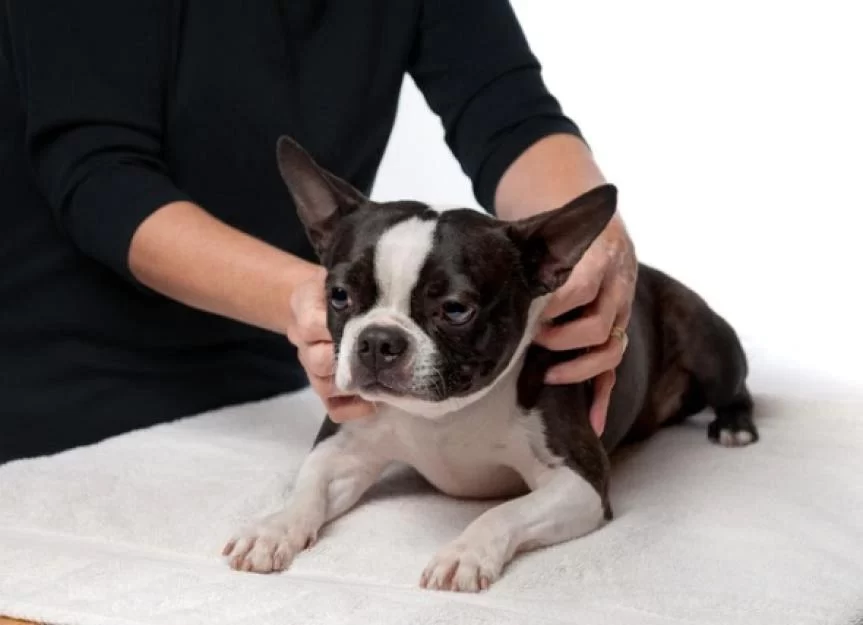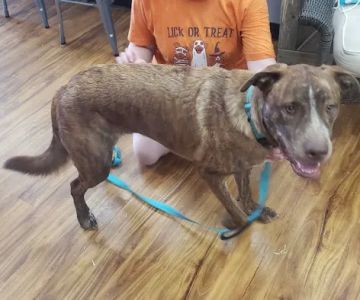Tips for Training Your Dog to Stay Calm: Effective Techniques and Methods
- Understanding Dog Anxiety
- Common Causes of Anxiety in Dogs
- Effective Techniques to Calm Your Dog
- Training Routine for Calm Dogs
- Tools and Products to Help Calm Dogs
- When to Seek Professional Help
Understanding Dog Anxiety
Dog anxiety is a common issue that many pet owners face. It can manifest in various ways, such as excessive barking, destructive behavior, or excessive panting. Anxiety in dogs may be triggered by stressors like loud noises, separation from their owners, or unfamiliar environments.
Understanding the underlying causes of anxiety is key to addressing the behavior and helping your dog stay calm. In this article, we’ll explore effective methods to train your dog to stay calm, reduce anxiety, and improve their overall well-being.
Common Causes of Anxiety in Dogs
There are several reasons why your dog might be experiencing anxiety. Identifying these triggers is the first step toward helping them stay calm.
1. Separation Anxiety
Dogs are highly social animals, and being left alone for extended periods can lead to separation anxiety. This anxiety often results in destructive behaviors such as chewing, barking, or even soiling in the house.
2. Fear of Loud Noises
Thunderstorms, fireworks, or even the sound of vacuum cleaners can trigger fear in some dogs. These sounds can be overwhelming, causing your dog to become stressed and agitated.
3. Changes in Routine or Environment
Dogs thrive on routine, and any significant change—like moving to a new home, a change in family dynamics, or even a change in their daily schedule—can lead to anxiety.
4. Medical Issues
Health problems, such as chronic pain, illness, or neurological issues, can also contribute to anxiety in dogs. It’s important to consult with your vet if you suspect that your dog’s anxiety is related to a medical condition.
Effective Techniques to Calm Your Dog
Training your dog to stay calm is a process that requires patience and consistency. Here are some proven techniques that can help:
1. Positive Reinforcement
Reward-based training is one of the most effective ways to encourage calm behavior in dogs. When your dog remains calm in a stressful situation, reward them with treats, praise, or playtime. This reinforces the idea that staying calm leads to positive outcomes.
2. Desensitization
Desensitization involves gradually exposing your dog to the things that trigger their anxiety, such as loud noises or being left alone. Start with mild, manageable situations and gradually increase the intensity over time. Pair each exposure with positive reinforcement to help your dog associate the trigger with positive experiences.
3. Deep Breathing and Relaxation
Teaching your dog to relax through deep breathing exercises can also help. Gently guide your dog to a calm state by using slow, deliberate movements. You can try holding your dog’s body gently or placing them in a comfortable position to encourage relaxation.
4. Create a Safe Space
Providing a safe, quiet area where your dog can retreat to when they feel anxious is crucial. This could be a crate, a quiet room, or even a cozy bed. Make the space inviting with toys, blankets, and other comfort items.
Training Routine for Calm Dogs
Consistency is key when training your dog to stay calm. Here’s a simple training routine to help your dog learn to manage their anxiety:
1. Start with Short Sessions
Begin with short training sessions (10-15 minutes) and gradually increase the duration as your dog becomes more comfortable. Be patient and avoid overwhelming them with too much stimulation.
2. Use a Calm Tone of Voice
Dogs respond to the tone of your voice. Use a calm, soothing voice when interacting with your dog, especially during moments of stress. Avoid raising your voice or sounding tense, as this can escalate their anxiety.
3. Incorporate Playtime
Play is an excellent way to burn off excess energy and help your dog relax. Incorporate play into your training routine to keep your dog mentally and physically stimulated.
4. Socialize Your Dog
Socializing your dog with other dogs and people in a controlled environment helps reduce anxiety and fosters calm behavior in new situations. Start with calm, well-behaved dogs and gradually increase the number and variety of interactions.
Tools and Products to Help Calm Dogs
In addition to training techniques, there are several products available that can help calm your dog:
1. Calming Collars
Calming collars are infused with pheromones that help reduce anxiety in dogs. These collars are a convenient way to provide continuous calming effects throughout the day.
2. Anxiety Wraps
Anxiety wraps are snug-fitting garments designed to provide gentle pressure on your dog’s body, mimicking the feeling of being held. This can have a soothing effect on anxious dogs.
3. Calming Music
Some dogs respond well to calming music or white noise, which can help mask external sounds that trigger anxiety. There are even specially designed playlists and music tracks available for dogs.
4. CBD Products
CBD oil and treats are becoming increasingly popular as a natural solution for managing anxiety in dogs. Always consult with your veterinarian before introducing any new supplements to your dog’s routine.
When to Seek Professional Help
If your dog’s anxiety persists or worsens despite your efforts, it may be time to consult a professional dog trainer or behaviorist. In some cases, your vet may also recommend medication or additional interventions to manage your dog’s anxiety.
At Hidden Brook Veterinary, we offer expert advice and support for anxious pets. If you’re concerned about your dog’s behavior or need help managing anxiety, don’t hesitate to contact us for guidance and assistance.












